Phosphorylation of serine 205 by the protein kinase CK2 persists on Pax3-FOXO1, but not Pax3, throughout early myogenic differentiation
- PMID: 19904978
- PMCID: PMC2790557
- DOI: 10.1021/bi9012947
Phosphorylation of serine 205 by the protein kinase CK2 persists on Pax3-FOXO1, but not Pax3, throughout early myogenic differentiation
Abstract
The myogenic transcription factor Pax3 plays an essential role in early skeletal muscle development and is a key component in alveolar rhabdomyosarcoma (ARMS), a childhood solid muscle tumor. ARMS is characterized by a t(2;13) chromosomal translocation resulting in the fusion of the 5' Pax3 sequences to the 3' FOXO1 sequences to encode the oncogenic fusion protein, Pax3-FOXO1. Posttranslational modifications such as phosphorylation are common mechanisms by which transcription factors are regulated. Consistent with this fact, we demonstrated in a previous report that Pax3 is phosphorylated on Ser205 in proliferating, but not differentiated, primary myoblasts. However, the kinase that mediates this phosphorylation event has yet to be identified. In addition, it is not known whether Pax3-FOXO1 is phosphorylated at this site or how the phosphorylation of the fusion protein changes during early myogenic differentiation. In this report we identify CK2 (formerly termed "casein kinase II") as the kinase responsible for phosphorylating Pax3 and Pax3-FOXO1 at Ser205 in proliferating mouse primary myoblasts. Furthermore, we demonstrate that, in contrast to wild-type Pax3, phosphorylation at Ser205 persists on Pax3-FOXO1 throughout early myogenic differentiation. Finally, we show that Pax3-FOXO1 is phosphorylated at Ser205 in a variety of translocation-containing ARMS cell lines. The results presented in this report not only suggest a possible mechanism by which the disregulation of Pax3-FOXO1 may contribute to tumorigenesis but also identify a novel target for the development of therapies for the treatment of ARMS.
Figures

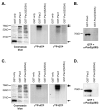
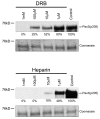
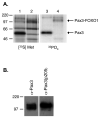
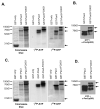
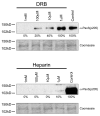


Similar articles
-
Identification of serines 201 and 209 as sites of Pax3 phosphorylation and the altered phosphorylation status of Pax3-FOXO1 during early myogenic differentiation.Int J Biochem Cell Biol. 2011 Jun;43(6):936-45. doi: 10.1016/j.biocel.2011.03.010. Epub 2011 Mar 31. Int J Biochem Cell Biol. 2011. PMID: 21440083 Free PMC article.
-
Identification of CK2 as the kinase that phosphorylates Pax3 at Ser209 in early myogenic differentiation.Biochem Biophys Res Commun. 2012 Nov 9;428(1):24-30. doi: 10.1016/j.bbrc.2012.09.141. Epub 2012 Oct 8. Biochem Biophys Res Commun. 2012. PMID: 23058914 Free PMC article.
-
Identification of serine 205 as a site of phosphorylation on Pax3 in proliferating but not differentiating primary myoblasts.Protein Sci. 2008 Nov;17(11):1979-86. doi: 10.1110/ps.035956.108. Epub 2008 Aug 15. Protein Sci. 2008. PMID: 18708529 Free PMC article.
-
Alveolar rhabdomyosarcoma: is the cell of origin a mesenchymal stem cell?Cancer Lett. 2009 Jul 8;279(2):126-36. doi: 10.1016/j.canlet.2008.09.039. Epub 2008 Nov 12. Cancer Lett. 2009. PMID: 19008039 Review.
-
A call to ARMS: targeting the PAX3-FOXO1 gene in alveolar rhabdomyosarcoma.Expert Opin Ther Targets. 2013 May;17(5):607-23. doi: 10.1517/14728222.2013.772136. Epub 2013 Feb 25. Expert Opin Ther Targets. 2013. PMID: 23432728 Free PMC article. Review.
Cited by
-
CK2α is essential for embryonic morphogenesis.Mol Cell Biochem. 2011 Oct;356(1-2):209-16. doi: 10.1007/s11010-011-0961-8. Epub 2011 Jul 15. Mol Cell Biochem. 2011. PMID: 21761203 Free PMC article.
-
Acquisition of an oncogenic fusion protein is sufficient to globally alter the landscape of miRNA expression to inhibit myogenic differentiation.Oncotarget. 2017 Jul 29;8(50):87054-87072. doi: 10.18632/oncotarget.19693. eCollection 2017 Oct 20. Oncotarget. 2017. PMID: 29152063 Free PMC article.
-
Identification of serines 201 and 209 as sites of Pax3 phosphorylation and the altered phosphorylation status of Pax3-FOXO1 during early myogenic differentiation.Int J Biochem Cell Biol. 2011 Jun;43(6):936-45. doi: 10.1016/j.biocel.2011.03.010. Epub 2011 Mar 31. Int J Biochem Cell Biol. 2011. PMID: 21440083 Free PMC article.
-
Melanoma biomolecules: independently identified but functionally intertwined.Front Oncol. 2013 Sep 24;3:252. doi: 10.3389/fonc.2013.00252. Front Oncol. 2013. PMID: 24069584 Free PMC article. Review.
-
Cyclin-dependent kinase 4 phosphorylates and positively regulates PAX3-FOXO1 in human alveolar rhabdomyosarcoma cells.PLoS One. 2013;8(2):e58193. doi: 10.1371/journal.pone.0058193. Epub 2013 Feb 28. PLoS One. 2013. PMID: 23469153 Free PMC article.
References
-
- Buckingham M, Relaix F. The role of Pax genes in the development of tissues and organs: Pax3 and Pax7 regulate muscle progenitor cell functions. Annual review of cell and developmental biology. 2007;23:645–673. - PubMed
-
- Conway SJ, Henderson DJ, Kirby ML, Anderson RH, Copp AJ. Development of a lethal congenital heart defect in the splotch (Pax3) mutant mouse. Cardiovascular research. 1997;36:163–173. - PubMed
-
- Barr FG. Gene fusions involving PAX and FOX family members in alveolar rhabdomyosarcoma. Oncogene. 2001;20:5736–5746. - PubMed
-
- Sorensen PH, Lynch JC, Qualman SJ, Tirabosco R, Lim JF, Maurer HM, Bridge JA, Crist WM, Triche TJ, Barr FG. PAX3-FKHR and PAX7-FKHR gene fusions are prognostic indicators in alveolar rhabdomyosarcoma: a report from the children's oncology group. J Clin Oncol. 2002;20:2672–2679. - PubMed
-
- Kelly KM, Womer RB, Sorensen PH, Xiong QB, Barr FG. Common and variant gene fusions predict distinct clinical phenotypes in rhabdomyosarcoma. J Clin Oncol. 1997;15:1831–1836. - PubMed
Publication types
MeSH terms
Substances
Grants and funding
LinkOut - more resources
Full Text Sources
Molecular Biology Databases
Research Materials
Miscellaneous

